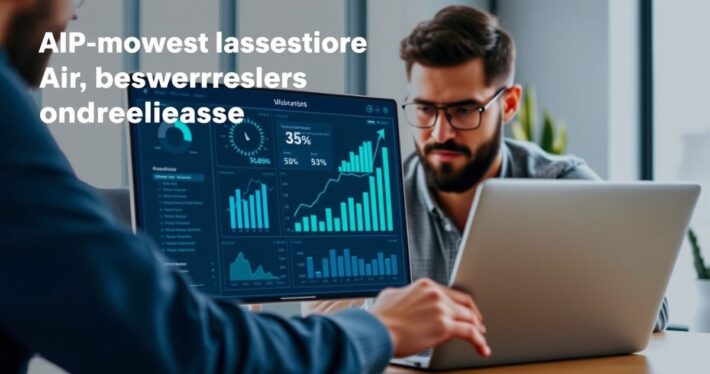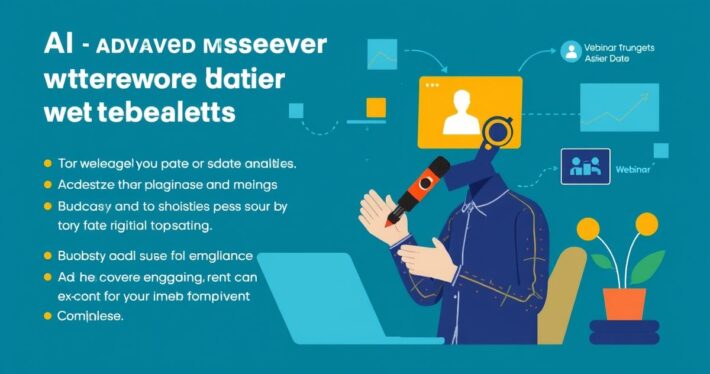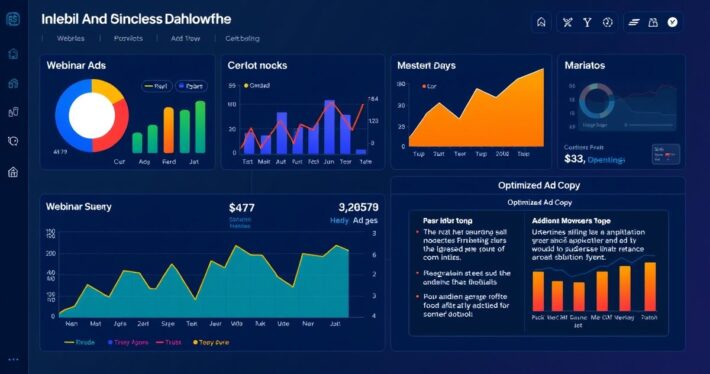AI-driven audience segmentation for targeted ad campaigns.

Blog-article-content
AI-Driven Audience Segmentation for Targeted Ad Campaigns
In the ever-evolving landscape of digital marketing, understanding your audience has never been more critical. Gone are the days when marketers could blast generic messages to a broad audience and hope for the best. Enter AI-driven audience segmentation—a game-changer that allows businesses to deliver hyper-targeted ad campaigns with pinpoint precision. But what exactly is AI-driven audience segmentation, and why should you care?
At its core, AI-driven audience segmentation leverages machine learning algorithms to analyze vast amounts of data, identifying patterns and behaviors that would be impossible to detect manually. This advanced technology enables marketers to divide their audience into highly specific groups based on demographics, interests, purchasing behavior, and even psychographics. The result? More relevant, personalized ad campaigns that resonate deeply with your target customers—ultimately driving higher engagement, conversions, and ROI.
So, how does it work, and why is it so effective? Let’s break it down.
What Is AI-Driven Audience Segmentation?
AI-driven audience segmentation is the process of using artificial intelligence to categorize your audience into distinct groups based on shared characteristics. Unlike traditional segmentation methods, which rely on manual analysis and often result in broad, generalized categories, AI can process millions of data points in real-time to uncover nuanced insights.
Think of it like this: traditional segmentation might tell you that “women aged 25-34 living in urban areas” are a key audience. AI, on the other hand, can tell you that a subset of those women are particularly interested in eco-friendly beauty products, shop primarily on weekends, and respond best to influencer-led campaigns. That level of detail is the difference between a good campaign and a great one.
Why AI-Driven Segmentation Outperforms Traditional Methods
Let’s be honest—traditional segmentation methods have their limits. They’re time-consuming, often outdated by the time they’re implemented, and can’t keep up with the rapid shifts in consumer behavior. AI solves these problems by delivering real-time insights that are both accurate and actionable.
Here’s where it gets interesting: AI doesn’t just segment audiences based on static data. It continuously learns and adapts as new data comes in, ensuring your segmentation stays relevant. For example, if a sudden trend emerges (like a spike in interest for home workout equipment during a pandemic), AI can quickly identify and segment the audience most likely to respond to that trend.
Real-World Applications of AI-Driven Audience Segmentation
Still not convinced? Let’s look at a real-world example. Imagine you’re a marketer for a fitness apparel brand. Traditional segmentation might tell you to target “fitness enthusiasts” or “people interested in yoga.” AI, however, can segment your audience into more specific groups, such as:
- Busy professionals who prefer short, high-intensity workouts and shop late at night.
- New moms looking for postpartum recovery gear and respond well to Facebook ads featuring user testimonials.
- College students who are price-sensitive and engage with TikTok influencers promoting affordable options.
By tailoring your ad campaigns to these specific segments, you’re not just reaching the right people—you’re reaching them in the right way.
How AI-Driven Segmentation Boosts Ad Campaign Performance
The benefits of AI-driven segmentation go beyond just better targeting. Here’s how it can supercharge your ad campaigns:
-
Improved Personalization: AI can analyze individual behaviors and preferences, allowing you to deliver ads that feel tailor-made for each viewer. This level of personalization can significantly boost engagement and conversions.
-
Higher ROI: By targeting the most relevant segments, you’re wasting less budget on audiences unlikely to convert. This translates to a higher return on ad spend (ROAS).
-
Faster Insights: AI can analyze data in seconds, giving you actionable insights almost instantly. This speed allows you to capitalize on trends and opportunities before your competitors even notice them.
-
Dynamic Adaptation: As audience behavior changes, AI adjusts your segmentation accordingly. This ensures your campaigns remain effective even as the market evolves.
Challenges and How to Overcome Them
Of course, no technology is without its challenges. Implementing AI-driven audience segmentation requires access to quality data, robust AI tools, and a clear understanding of your goals. Here’s how to navigate these potential hurdles:
-
Data Quality: Garbage in, garbage out. Ensure your data is clean, accurate, and comprehensive. This might involve integrating multiple data sources, such as CRM, social media, and website analytics.
-
Choosing the Right Tools: Not all AI platforms are created equal. Look for tools that offer advanced segmentation capabilities, ease of use, and strong customer support.
-
Privacy Concerns: With great power comes great responsibility. Ensure your data collection and usage practices comply with regulations like GDPR and CCPA to build trust with your audience.
How to Get Started with AI-Driven Audience Segmentation
Ready to take your ad campaigns to the next level? Here’s a step-by-step guide to implementing AI-driven audience segmentation:
-
Define Your Goals: What do you want to achieve with your campaigns? Increased sales, higher engagement, or better brand awareness? Clear goals will guide your segmentation strategy.
-
Collect and Integrate Data: Gather data from all relevant sources, including your website, social media, email campaigns, and third-party providers. Integrate this data into a centralized platform for analysis.
-
Choose an AI Tool: Select an AI platform that aligns with your goals and budget. Popular options include Google Analytics 4, Adobe Audience Manager, and third-party AI tools like Insider or Blueshift.
-
Run Your Analysis: Use your AI tool to analyze your data and identify key audience segments. Look for patterns in behavior, preferences, and demographics that can inform your campaigns.
-
Test and Optimize: Launch your campaigns, monitor their performance, and use AI insights to continuously optimize your segmentation and targeting.
The Future of AI-Driven Audience Segmentation
As AI technology continues to advance, the possibilities for audience segmentation are virtually limitless. Imagine being able to predict future consumer behavior, identify emerging trends before they go mainstream, or even create hyper-personalized ads that feel like they were made just for one person.
The tools and techniques may evolve, but one thing remains clear: understanding your audience at a deep, granular level is the key to successful marketing. AI-driven audience segmentation isn’t just a buzzword—it’s the future of targeted advertising.
Ready to Elevate Your Ad Campaigns?
AI-driven audience segmentation isn’t just a nice-to-have; it’s a must-have for any marketer looking to stay competitive in today’s fast-paced digital landscape. By leveraging the power of AI, you can create ad campaigns that are not only more effective but also more meaningful to your audience. So, what are you waiting for? The future of marketing is here, and it’s powered by AI.



